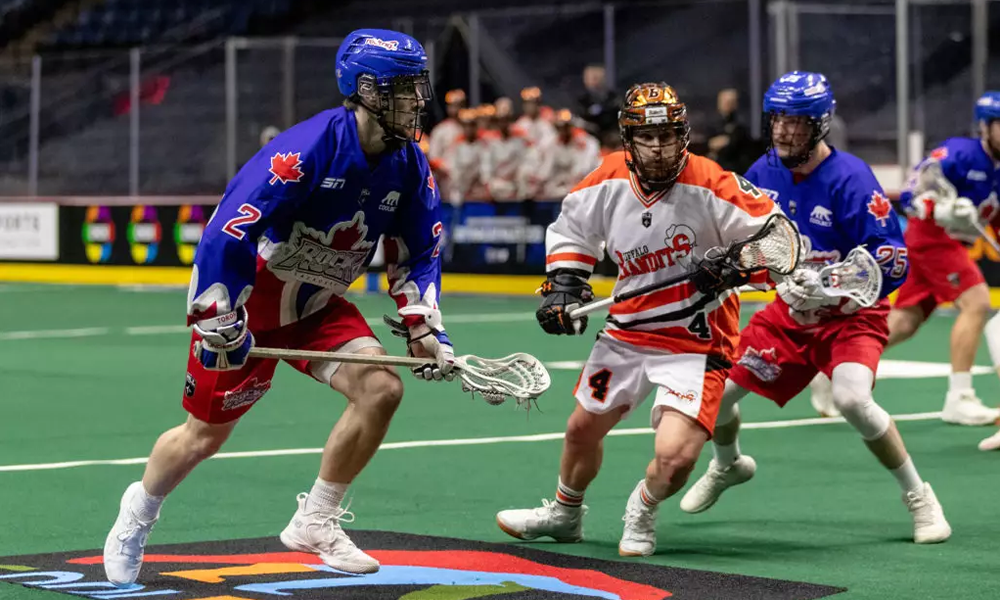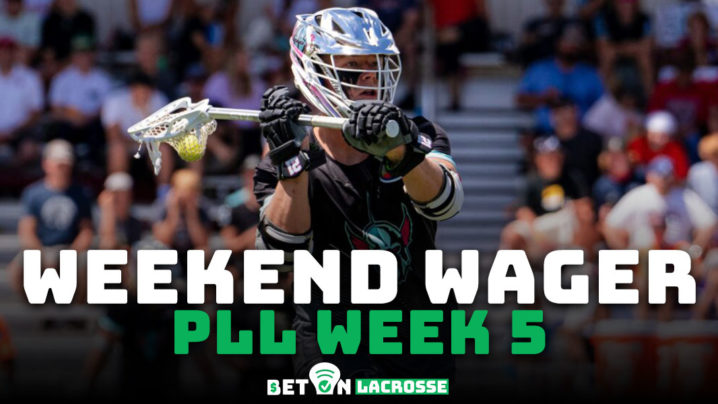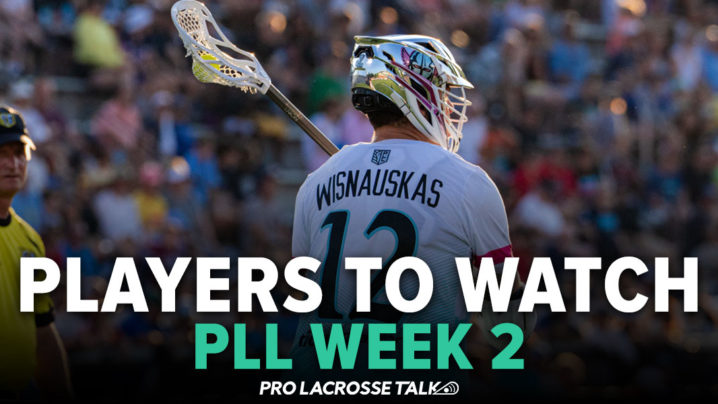The NLL Division Finals are here with matchups between the Buffalo Bandits and Toronto Rock and San Diego Seals and Colorado Mammoth! For the first time since 2017, the NLL Division Finals will feature three-game series.
Of the eight division series that occurred between 2014 and 2017, half lasted three games long. Of the 14 total three-game playoff series (both division finals and NLL finals) that occurred since 2014, only six have lasted the full three games. Let’s take a look at what teams need to do in order to win their series and advance to the 2022 NLL Finals.
How Teams Fared in Back-To-Back Regular Season Matchups
In my previous article, I outlined matchups where teams played each other twice which mimics the series that we will see in the semifinals and finals of the 2022 NLL playoffs. Since that article, three more series-type matchups have occurred with the Swarm vs. Rock, the Bandits vs. Thunderbirds, and Mammoth vs. Roughnecks. In the nine back-to-back matchups we saw in the regular season, the winner of the first game is now 3-6 in the second matchup, the total score differential is now -31 and the average score differential between matchups is -3.44. The three most recent back-to-back matchups have produced a zero or positive score differential between the first and second game.
I wanted to ask why teams were losing the second game at such an alarming rate. To do so, I looked at a few metrics: goals, shots (on goal), turnovers, caused turnovers, saves and an estimated Offensive Efficiency (eOE) metric that I’m introducing in this article. Since NLL stat sheets don’t keep track of possession data or include shot clock violations as turnovers, eOE is calculated as goals divided by the sum of shots on goal and turnovers.
eOE = Goals ÷ (Shots on Goals + Turnovers)
This provides a surprisingly good ballpark compared to the number of theoretically possible possessions in an NLL game, 120 possessions (60 minutes x 60 seconds ÷ 30 second shot clock). In general, an eOE of ~15% or greater under normal circumstances (i.e. average number of shots) usually results in at least 10 goals. The main takeaway from this investigation: Defensive consistency is going to be the biggest factor in a team winning the championship.
Keys to Winning an NLL Playoff Series

The winner of the second game had the same or more shots on goal than in the first game seven of nine times. The inability to adjust to a team’s tweaked offensive strategy in subsequent games will very likely result in a three-game series. The two times this trend does not occur was in the Bandits vs. Thunderbirds, where Warren Hill was only stopping 62% of shots in both contests, and Wings vs. Thunderbirds.
While this could easily be reduced to the idea that shooting more results in wins, the idea is actually about obtaining more quality shots or a defense allowing more quality shots. To make this idea about quality shots a little more concrete, we can look at a few different metrics from a few different series so far that show that the quality of the shots is important.
The Wings’ eOE was 11.85% against the Thunderbirds and 10.08% in the five-game streak between the Swarm and the Bandits. During this stretch, they wouldn’t net above eight goals per game, but shot more than 45 times per game. Matt Vinc produced 54 and 60 saves against 65 and 71 shots from the Thunderbirds. Their success against this many shots is indicative of both Vinc’s play and the Bandits defense forcing low-quality shots from the Thunderbirds.
Improved goalie play is not as influential as I thought, as 13 of 18 goalies made more saves in the second game than in the first. Additionally, having a goalie make more saves than the opponent’s is not a good predictor for a victory. All of these results point to the necessity of a quality defensive scheme or set of adjustments that allow for a team to put themselves in a position to win multiple games in a series.
The Rock vs. Swarm series demonstrates the strength of defensive consistency. The Swarm had two offensively identical games (eOE = 15.8% and 14.1%), which indicates the Rock adjusted to reduce the quality of the Swarm’s opportunities. The Swarm, however, were not prepared for the Rock’s offensive adjustments, allowing an increase in the Rock’s eOE from 8.7% to 17.3%. The Rock took only six more shots, which cannot account for the significant ~9% eOE increase, indicating the quality of shots were also increased.
Examining the Roughnecks and Mammoth’s Recent Consecutive Games
Let’s take a closer look at the most recent back-to-back matchup between the Mammoth and Roughnecks. While, the Mammoth secured the second (and more important) victory, 16-12, they had lost to Calgary, 14-11, in their final regular season game. After an even first quarter in game one, the Roughnecks scored six unanswered points in the second quarter. This was largely due to the two-man game and ISO dodging of the Roughnecks’ righties. Eight of their 14 goals were initiated on the right side.
Your first half recap is Curtis Dickson…followed by a lot more Curtis Dickson. 😂@NLLRoughnecks lead it 9-3 at the break.
— NLL (@NLL) May 1, 2022
LIVE on ESPN+ and https://t.co/eBKBLLhGwy pic.twitter.com/DOmQpbeLKG
While that’s impressive, it’s arguably more so to hold an NLL offense scoreless for a whole quarter. The Roughnecks’ defense was impressive down the whole stretch of the game, allowing only five goals in settled, even strength situations. They accomplished this by restricting access to the center of the floor. Here’s what happened to Zed Williams in the first quarter when he managed to get there with the ball:
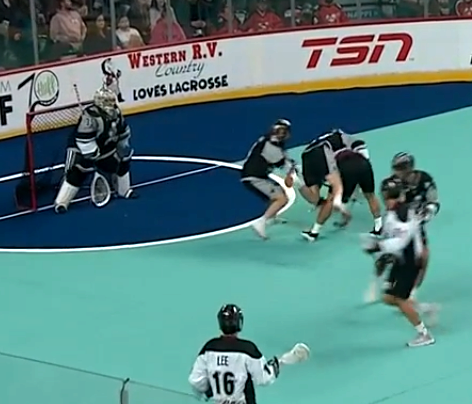
Even off-ball, the Mammoth offense had to fight to get into the center of the floor. The few opportunities a cutter made it through, Del Bianco either made a great save or the shot missed the cage. While the Mammoth began to catch up toward the end with some great plays, it wasn’t enough to overtake the lead the Roughnecks had built.
The Mammoth came into the second game ready to fight for the center and immediately had a much better first half. In fact, you can see the exact adjustment they made from the first game in a left-side double pick. In game one, the Mammoth take the double pick over the top and the Roughnecks’ defender in the center is ready to approach the ball. On the backside, both Roughnecks defenders can clog up the center for help because the Mammoth players are so far outside. Del Bianco easily saves that shot from the outside.
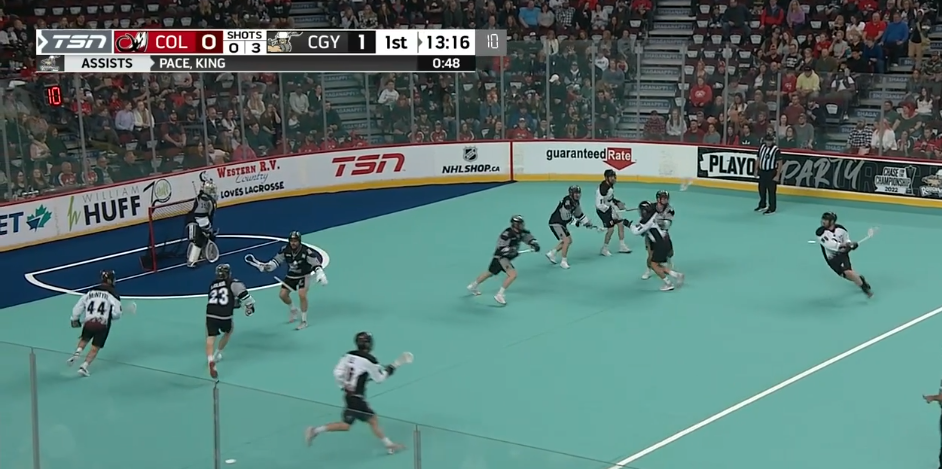
You see exactly the same play, at almost the same time in the second game, with two major differences. The pick is taken underneath and the defender gets caught on his own man. The “chef’s kiss” part of this adjustment is one of the far side offensive players distracts the Roughnecks’ help defender in the middle by using their defensive strategy to keep players away from the center against them. The help defender never sees the dodge underneath and the Mammoth score.
Flyin’ Connor Robinson with his first postseason goal!!#TuskUp pic.twitter.com/HoowjSVzpX
— Colorado Mammoth (@MammothLax) May 7, 2022
This was a theme of the second game. The Mammoth diverted help defenders which opened cutters, skip passes, and isolated dodging lanes underneath. They went from a handful of unsuccessful shots on the crease in game one to six of their 16 goals from the door step in game two, including this beauty of a rebound from Ryan Lee:
Reckless-LEE off the glass!
— NLL (@NLL) May 7, 2022
Leezer went horizontal to grab the rebound and make it 6-5. pic.twitter.com/ioZVgvpsb3
Not only that, but the Mammoth improved from five settled possession goals to 14! How does this relate to all of the numbers presented at the beginning of this? The Mammoth took six more shots in game two than in game one and the lack of adjustments from the Roughnecks allowed for more quality shots from the Mammoth. I didn’t even touch on the adjustment the Mammoth defense made to stop the right-handed players of the Roughnecks or the adjustment the Roughnecks’ lefties made to keep their offense in the second game because the lack of defensive adjustments is what ultimately cost the Roughnecks the game, in my opinion.
How to Bet the 2022 NLL Division Finals
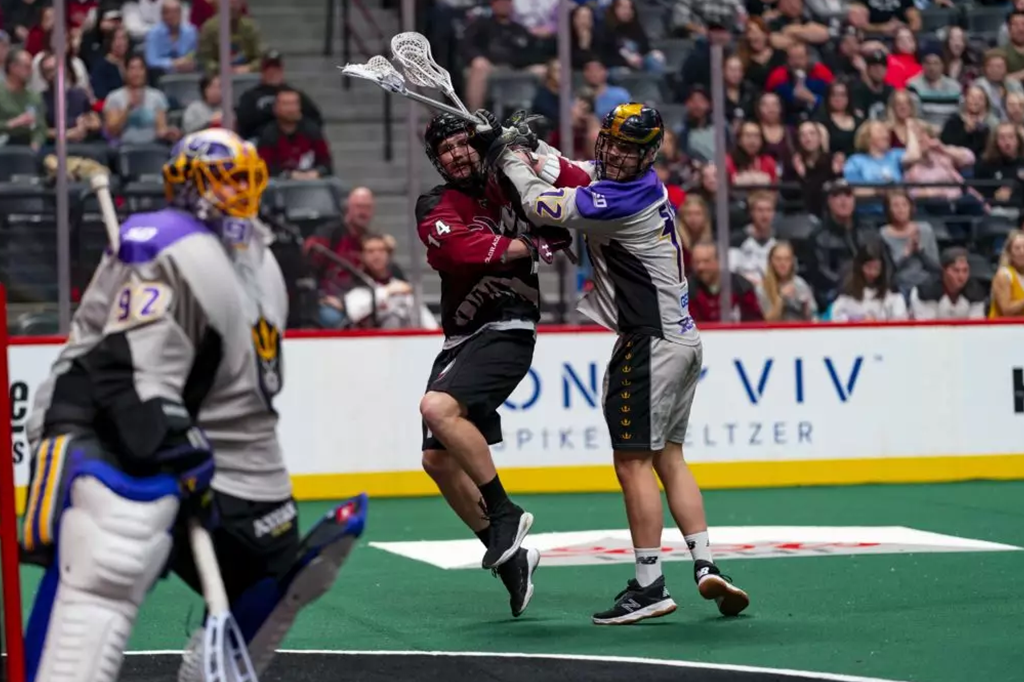
This weekend, the Bandits vs. Rock and Seals vs. Mammoth playoff series start. The second round might be the beginning of some true defensive battles as the Rock, Seals and Bandits are the top three defensive teams in the league by goals against average.
Although the Bandits have been a dominant NLL team, the Rock have actually won two of the three matchups against the Bandits in the regular season. All three of these games fell under the current total of 22.5. So, from a betting perspective, betting the Rock +1.5 and under 22.5 seem like good plays to start.
Seals vs. Mammoth is going to be an interesting series in an unpredictable way. The Mammoth has been one of the more volatile teams and their defense is about average in the league. The Seals also won two of the three regular season matchups against the Mammoth and all three games have fallen below the current 21.5 total. Given that the Seals have been in one-goal games in five of their last six, I also like betting the Mammoth +1.5. However, their defensive volatility make that and the under a much more risky play than in the other matchup.
After the first games, particularly if the favorite takes the first game, I’ll be keeping an eye on the moneyline odds for the underdogs in the second games. Ultimately, I am just excited for more playoff lacrosse!

